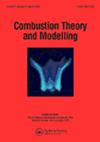Application of machine learning in low-order manifold representation of chemistry in turbulent flames
IF 1.9
4区 工程技术
Q4 ENERGY & FUELS
引用次数: 3
Abstract
The Uniform Conditional State (UCS) and the Multidimensional Flamelet Manifold (MFM) models are methods for the tabulation of chemistry in simulations of turbulent flames. The high-dimensionality of the tables these models generate and many possible combinations of the values for the input variables necessitate the allocation of a considerable size of memory during CFD calculations. This issue becomes even more problematic when adding more conditioning variables to the model. In this study, two Artificial Intelligence (AI)-based approaches referred to as Decision Tree (DT) and Artificial Neural Network (ANN) are developed and tested to provide in situ chemistry representation. The goal is to predict four parameters (outputs) accurately with low memory demand and computational cost. The trained AI models are then employed for simulation of a turbulent premixed flame. Comparison of the results from the AI-based approaches to those from the conventional UCS model shows acceptable agreement. The memory and CPU requirements from the different approaches are compared. It is found that the ANN model reduces the size of the chemistry table by around 92%. Conversely, the DT-based model reduces the size of the chemistry model by only 40%. The CPU time for using the DT model during the CFD calculations was around 10% shorter than the conventional approach while it was 8% higher for the ANN model. It was concluded that, based on the particular applications, different AI-based methods can facilitate an efficient representation of the chemistry manifold.机器学习在湍流火焰低阶流形化学表示中的应用
均匀条件态(UCS)和多维火焰流形(MFM)模型是湍流火焰模拟中的化学制表方法。这些模型生成的表格的高维性以及输入变量值的许多可能组合需要在CFD计算期间分配相当大的内存。当向模型中添加更多条件调节变量时,这个问题变得更加成问题。在本研究中,开发并测试了两种基于人工智能(AI)的方法,即决策树(DT)和人工神经网络(ANN),以提供原位化学表示。目标是在低内存需求和计算成本的情况下准确预测四个参数(输出)。然后将训练好的人工智能模型用于湍流预混火焰的模拟。将基于人工智能的方法与传统UCS模型的结果进行了比较,结果一致。比较了不同方法的内存和CPU需求。研究发现,人工神经网络模型将化学表的大小减少了92%左右。相反,基于dt的模型仅将化学模型的尺寸减小了40%。在CFD计算过程中,使用DT模型的CPU时间比传统方法缩短了10%左右,而使用ANN模型的CPU时间则提高了8%。结论是,基于特定的应用,不同的基于人工智能的方法可以促进化学歧管的有效表示。
本文章由计算机程序翻译,如有差异,请以英文原文为准。
求助全文
约1分钟内获得全文
求助全文
来源期刊

Combustion Theory and Modelling
工程技术-工程:化工
CiteScore
3.00
自引率
7.70%
发文量
38
审稿时长
6 months
期刊介绍:
Combustion Theory and Modelling is a leading international journal devoted to the application of mathematical modelling, numerical simulation and experimental techniques to the study of combustion. Articles can cover a wide range of topics, such as: premixed laminar flames, laminar diffusion flames, turbulent combustion, fires, chemical kinetics, pollutant formation, microgravity, materials synthesis, chemical vapour deposition, catalysis, droplet and spray combustion, detonation dynamics, thermal explosions, ignition, energetic materials and propellants, burners and engine combustion. A diverse spectrum of mathematical methods may also be used, including large scale numerical simulation, hybrid computational schemes, front tracking, adaptive mesh refinement, optimized parallel computation, asymptotic methods and singular perturbation techniques, bifurcation theory, optimization methods, dynamical systems theory, cellular automata and discrete methods and probabilistic and statistical methods. Experimental studies that employ intrusive or nonintrusive diagnostics and are published in the Journal should be closely related to theoretical issues, by highlighting fundamental theoretical questions or by providing a sound basis for comparison with theory.
 求助内容:
求助内容: 应助结果提醒方式:
应助结果提醒方式:


